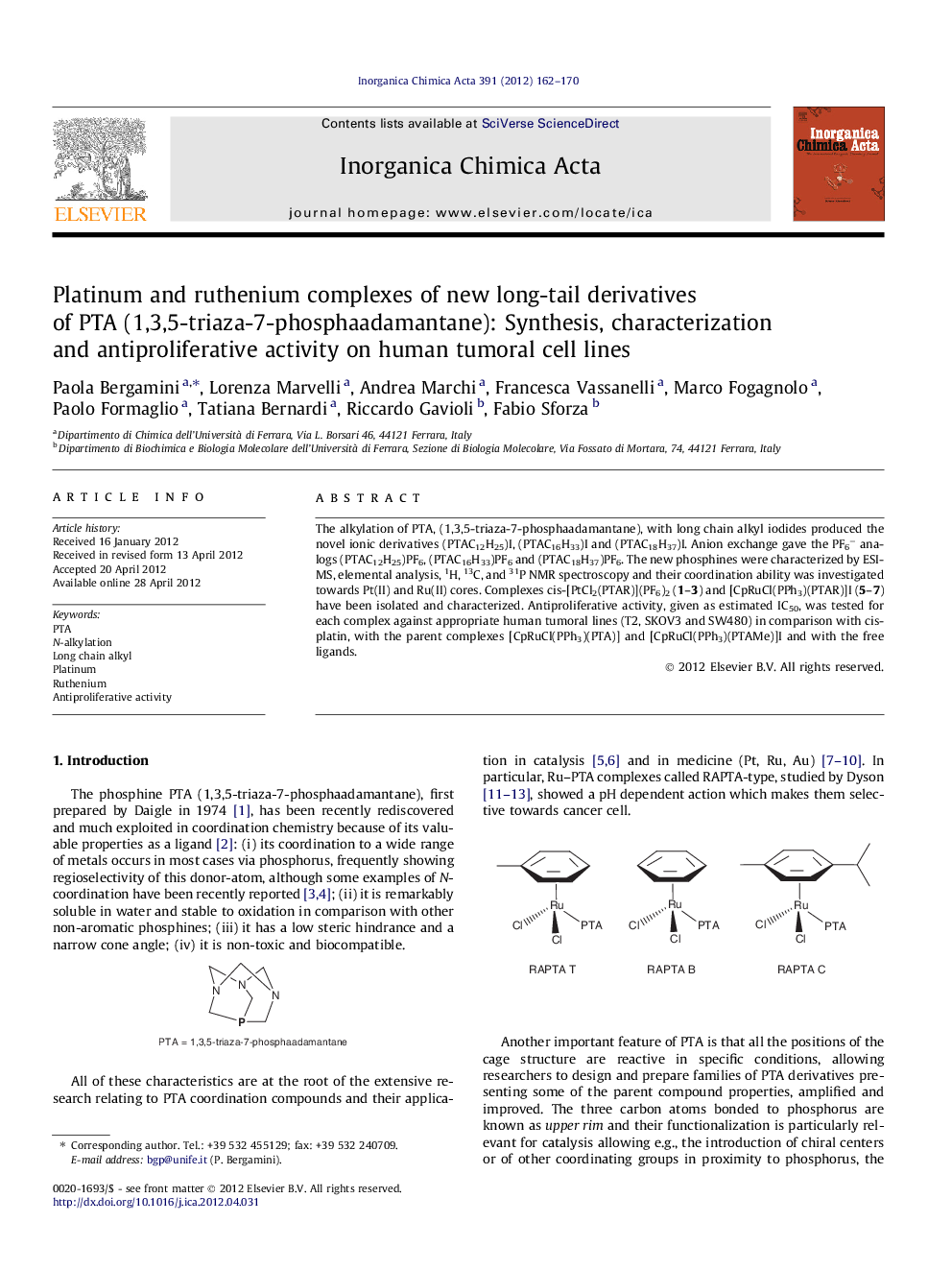| Article ID | Journal | Published Year | Pages | File Type |
|---|---|---|---|---|
| 1312409 | Inorganica Chimica Acta | 2012 | 9 Pages |
The alkylation of PTA, (1,3,5-triaza-7-phosphaadamantane), with long chain alkyl iodides produced the novel ionic derivatives (PTAC12H25)I, (PTAC16H33)I and (PTAC18H37)I. Anion exchange gave the PF6− analogs (PTAC12H25)PF6, (PTAC16H33)PF6 and (PTAC18H37)PF6. The new phosphines were characterized by ESI-MS, elemental analysis, 1H, 13C, and 31P NMR spectroscopy and their coordination ability was investigated towards Pt(II) and Ru(II) cores. Complexes cis-[PtCl2(PTAR)](PF6)2 (1–3) and [CpRuCl(PPh3)(PTAR)]I (5–7) have been isolated and characterized. Antiproliferative activity, given as estimated IC50, was tested for each complex against appropriate human tumoral lines (T2, SKOV3 and SW480) in comparison with cisplatin, with the parent complexes [CpRuCl(PPh3)(PTA)] and [CpRuCl(PPh3)(PTAMe)]I and with the free ligands.
Graphical abstractThe new long tail PTA (1,3,5-triaza-7-phosphaadamantane) derivatives (PTACnH2n+1)+, prepared as I− and PF6− salts, coordinate regiospecifically via phosphorus to Pt(II) and Ru(II) giving complexes whose antiproliferative activity, tested on tumoral human cell lines T2, SKOV3 and SW480, has been found remarkable even at low doses.Figure optionsDownload full-size imageDownload as PowerPoint slideHighlights► New long tail PTA derivatives (PTACnH2n+1)+ have been prepared. ► They coordinate regiospecifically via phosphorus to Pt(II) and Ru(II). ► The antiproliferative activity on tumoral human cell lines has been tested.
